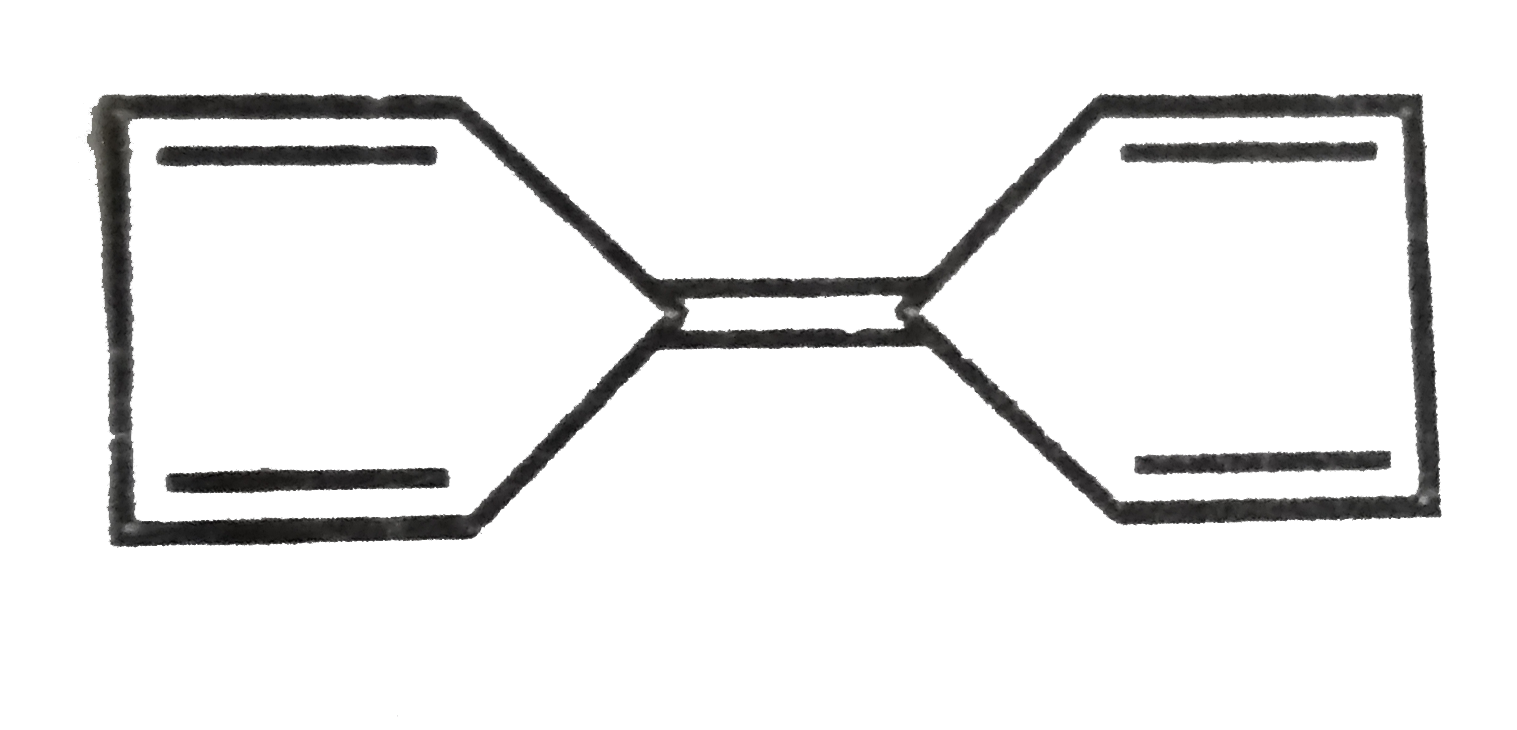Which of the following compound will rotate the plane polarized light at room temperature?




The correct Answer is:b
To determine which compound will rotate the plane polarized light at room temperature, we need to identify the optically active compounds among the given options. An optically active compound is one that lacks a plane of symmetry and a center of symmetry, allowing it to rotate plane polarized light.
1. Understand Optical Activity:
- Optical activity refers to the ability of a compound to rotate plane polarized light. This property is exhibited by chiral molecules, which lack internal planes of symmetry and centers of symmetry.
2. Analyze Each Compound:
- For each compound provided in the options, we need to check for the presence of a plane of symmetry or a center of symmetry.
3. Evaluate Option A:
- Check for symmetry: If the compound has a plane of symmetry, it is not optically active.
- Conclusion: If a plane of symmetry exists, this compound will not rotate plane polarized light.
4. Evaluate Option B:
- Check for symmetry: Analyze the structure for any planes or centers of symmetry.
- Conclusion: If there is no plane of symmetry or center of symmetry, this compound is likely to be optically active and will rotate plane polarized light.
5. Evaluate Option C:
- Check for symmetry: Similar to the previous steps, look for any planes of symmetry.
- Conclusion: If a plane of symmetry exists, this compound will not rotate plane polarized light.
6. Evaluate Option D:
- Check for symmetry: Analyze the structure for any planes or centers of symmetry.
- Conclusion: If there is no plane of symmetry or center of symmetry, this compound is likely to be optically active and will rotate plane polarized light.
7. Final Decision:
- After evaluating all options, identify which compound(s) do not have a plane of symmetry or center of symmetry.
- Based on the analysis, conclude that Option B is the correct answer as it is the only compound that is optically active and will rotate plane polarized light at room temperature.
Conclusion:
The compound that will rotate the plane polarized light at room temperature is Option B.
- Optical activity refers to the ability of a compound to rotate plane polarized light. This property is exhibited by chiral molecules, which lack internal planes of symmetry and centers of symmetry.
- For each compound provided in the options, we need to check for the presence of a plane of symmetry or a center of symmetry.
- Check for symmetry: If the compound has a plane of symmetry, it is not optically active.
- Conclusion: If a plane of symmetry exists, this compound will not rotate plane polarized light.
- Check for symmetry: Analyze the structure for any planes or centers of symmetry.
- Conclusion: If there is no plane of symmetry or center of symmetry, this compound is likely to be optically active and will rotate plane polarized light.
- Check for symmetry: Similar to the previous steps, look for any planes of symmetry.
- Conclusion: If a plane of symmetry exists, this compound will not rotate plane polarized light.
- Check for symmetry: Analyze the structure for any planes or centers of symmetry.
- Conclusion: If there is no plane of symmetry or center of symmetry, this compound is likely to be optically active and will rotate plane polarized light.
- After evaluating all options, identify which compound(s) do not have a plane of symmetry or center of symmetry.
- Based on the analysis, conclude that Option B is the correct answer as it is the only compound that is optically active and will rotate plane polarized light at room temperature.
The compound that will rotate the plane polarized light at room temperature is Option B.
Topper's Solved these Questions
- BOOK - MS CHOUHANCHAPTER - ISOMERISM (STRUCTURAL & STEREOISOMERISM)EXERCISE - Level 1 (Q.1 To Q.30)13videos
ISOMERISM (STRUCTURAL & STEREOISOMERISM)
- BOOK - MS CHOUHANCHAPTER - ISOMERISM (STRUCTURAL & STEREOISOMERISM)EXERCISE - Level 1 (Q.31 To Q.60)9videos
ISOMERISM (STRUCTURAL & STEREOISOMERISM)
- BOOK - MS CHOUHANCHAPTER - GRIGNARD REAGENTSEXERCISE - Level 1 (Q.61 To Q.66)1videos
GRIGNARD REAGENTS
- BOOK - MS CHOUHANCHAPTER - NOMENCLATURE AND CONFORMATIONS OF ALKANES AND CYCLOALKANESEXERCISE - Additional Objective Questions (MCQ)1videos
NOMENCLATURE AND CONFORMATIONS OF ALKANES AND CYCLOALKANES
Similar Questions
Knowledge Check
- Question 1 - Select One
Which of following compound will rotate the plane polarized light at room temperature?
A B
B C
C D
D
- Question 2 - Select One
Which of following compound will rotate the plane polarized light at room temperature?
A B
B C
C D
D
- Question 3 - Select One
Which of the following compounds does not rotate the plane polarised light?
A2-Chloropropanoic acidB2-ChlorobutaneC4-HydroxyheptaneD2-Chloro-1-deuteropropane
Which of the following compounds is non-polar ?
View SolutionWhich of the following compound would not react with Lucas reagent at room temperature?
View SolutionWhich of the following compounds is non - polar ?
View SolutionWhich of the following compound would not react with Lucas reagent at room temperature?
View SolutionWhich of the following compounds would not react with Lucas reagent at room temperature?
View Solution

